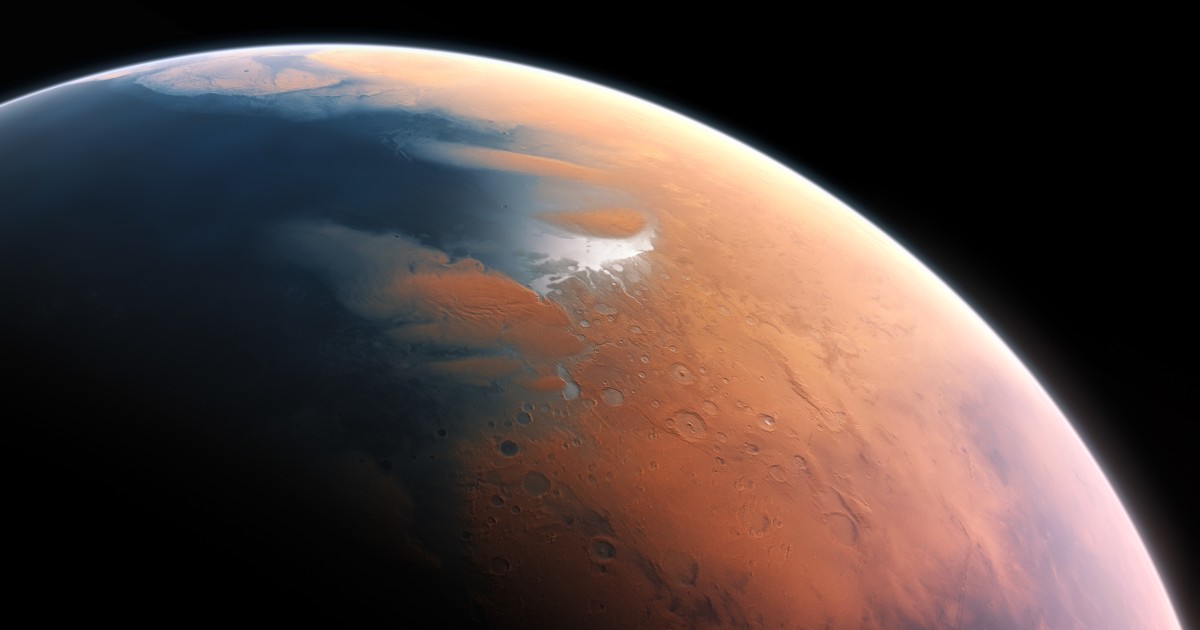Published
4 years agoon
By
Adubianews
Roughly four billion years ago, Mars may have looked much like Earth. Studies suggest it housed an ocean in its northern hemisphere that contained as much water as half of our own Atlantic Ocean. But fast forward a billion years and it’s drier than any desert on Earth, leaving just dusty old lakebeds and the scars of old rivers for rovers and orbiters to study.
So where did all that water go? The generally accepted answer is that it escaped into space. With less gravity than Earth, Mars has a harder time holding onto its atmosphere, and over the course of a billion years or so huge amounts of water vapor could drift off into space.
While some of its water certainly would have escaped in this manner, the researchers on the new study found that this process can’t account for all of it. By their calculations, at least 30 percent of the original water – and perhaps as much as 99 percent – is still there. Rather than escaping up, it escaped down into minerals in the planet’s crust.
The researchers examined how much water existed on Mars throughout its history, in the forms of liquid, vapor and ice. They also studied the chemical composition of the planet’s atmosphere and crust.
In particular, they were focusing on the ratio of “light” to “heavy” hydrogen. Deuterium is a rarer, heavier isotope of hydrogen with an extra neutron in its atomic nucleus, and because of this it’s less likely to be lost to space than the lighter form. That means that over time, if water vapor was escaping into space it would leave behind a higher ratio of deuterium to regular hydrogen in the atmosphere.
When the team examined this ratio, they found that it couldn’t account for the amount of water that should have escaped into space, based on how much of the stuff Mars used to hold. Instead, they suggest that the vast majority of it seeped into minerals in the ground and became trapped there.
“Atmospheric escape clearly had a role in water loss, but findings from the last decade of Mars missions have pointed to the fact that there was this huge reservoir of ancient hydrated minerals whose formation certainly decreased water availability over time,” says Bethany Ehlmann, co-author of the study.
A similar thing happens on Earth, but with one major difference: Mars isn’t very tectonically active. On Earth, the absorbed water is recycled back into the atmosphere through plate tectonics and volcanism, but on Mars it just stays underground.
“All of this water was sequestered fairly early on, and then never cycled back out,” says Eva Scheller, lead author of the study.
The question of whether Mars’ water went up or down is one that the fresh-faced Perseverance rover could help answer. Meanwhile, the next steps for the team are to perform similar analyses for the cycles of nitrogen and sulfur minerals, as well as run lab test simulations of weathering processes on Mars.


Inusah Fuseini Blames Bawumia’s Concession for Disrupting Parliamentary Collation


Bailiff Jailed for Forging Court Documents Bearing Retired Judge’s Signature


NDC’s Yamin and Abanga Disown Rogue Anti-Galamsey Taskforce


Why I Believe King Paluta Is a “Fool”-Bullgod Explains


Woman Caught Stealing from Shop After Posing as Customer in Madina


Livestock Thief Nabbed and Beaten Brutally in Pokuase-Watch


Bullgod Calls Jesus a “Fool”, Cites Proverbs 29:11 to Justify Shocking Statement


Fulani Herdsman Wins Hearts Singing Shatta Wale’s ‘One Day’ While Herding Cattle


NPP Supporter Demands Resignation of Chairman and General Secretary After Election Loss

























